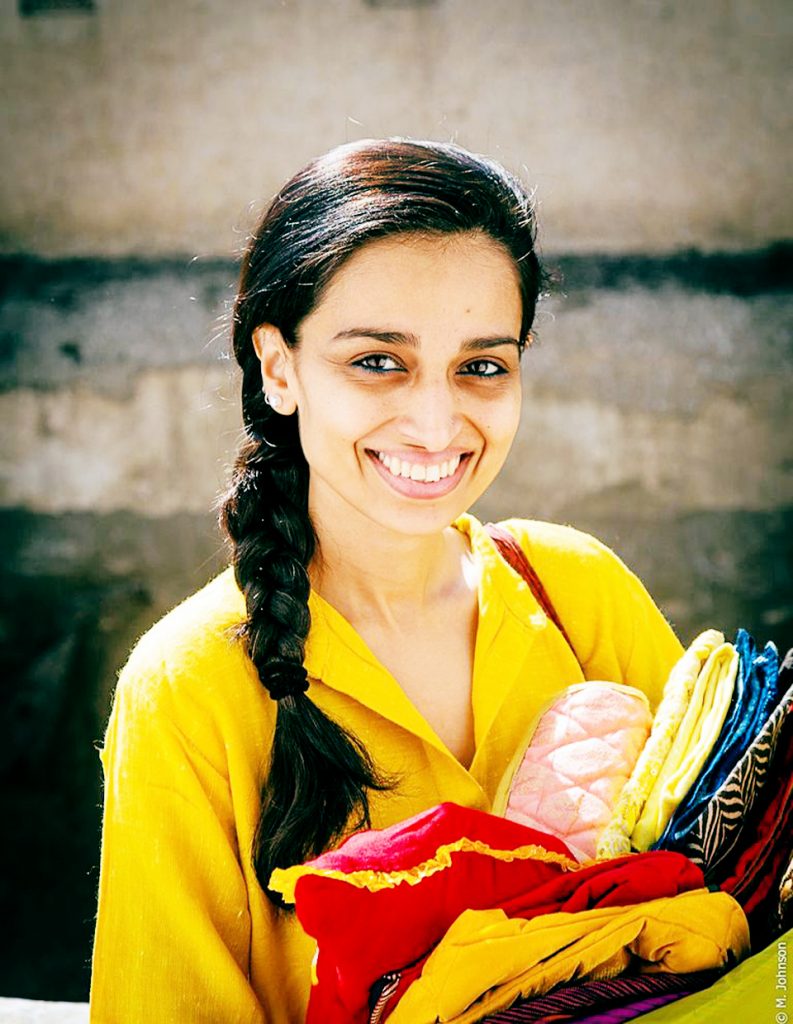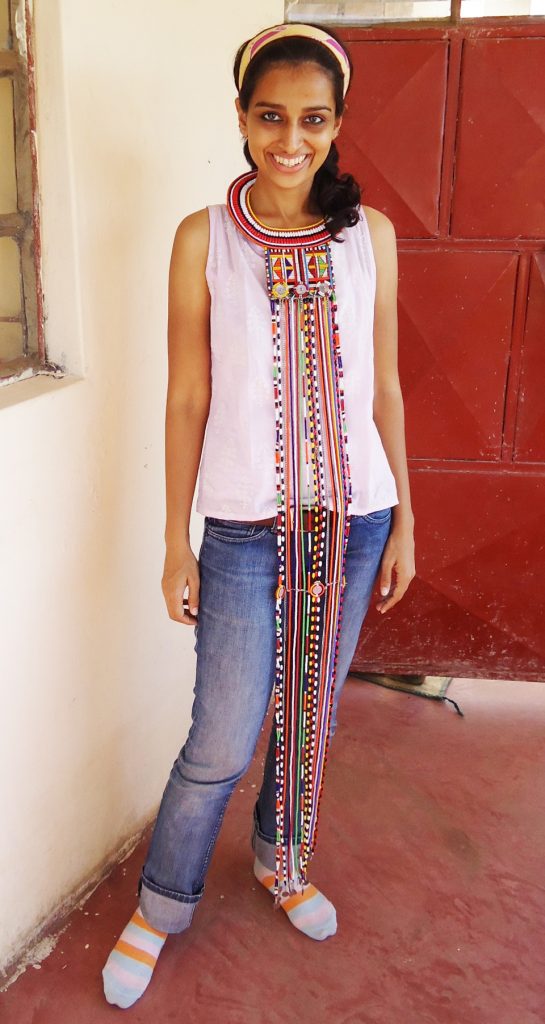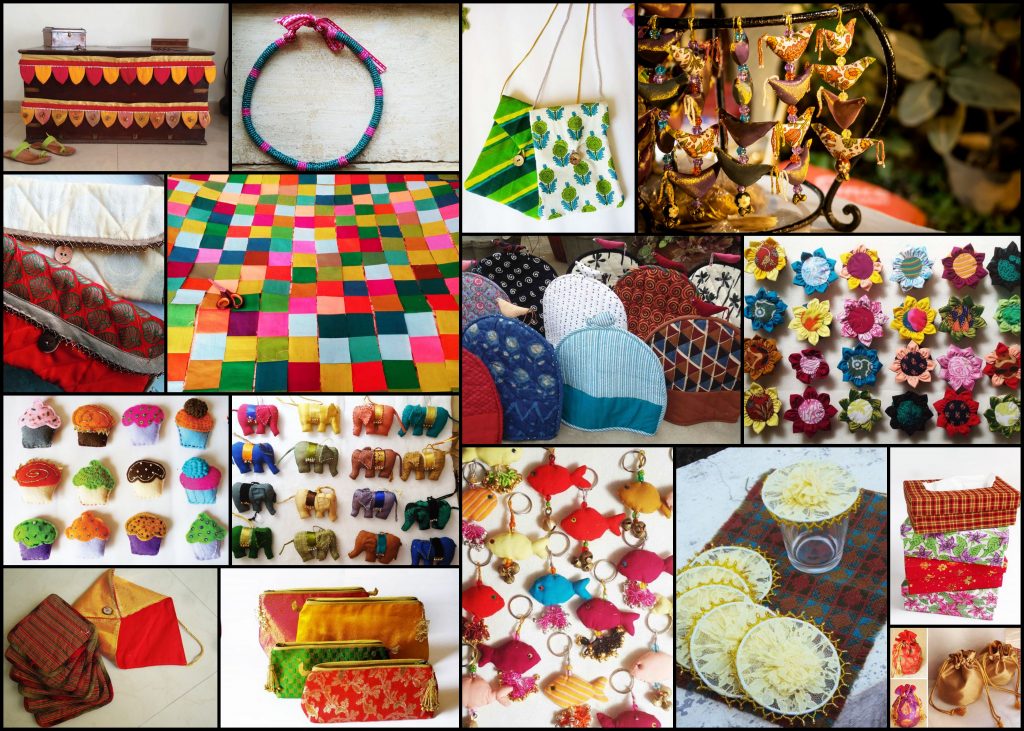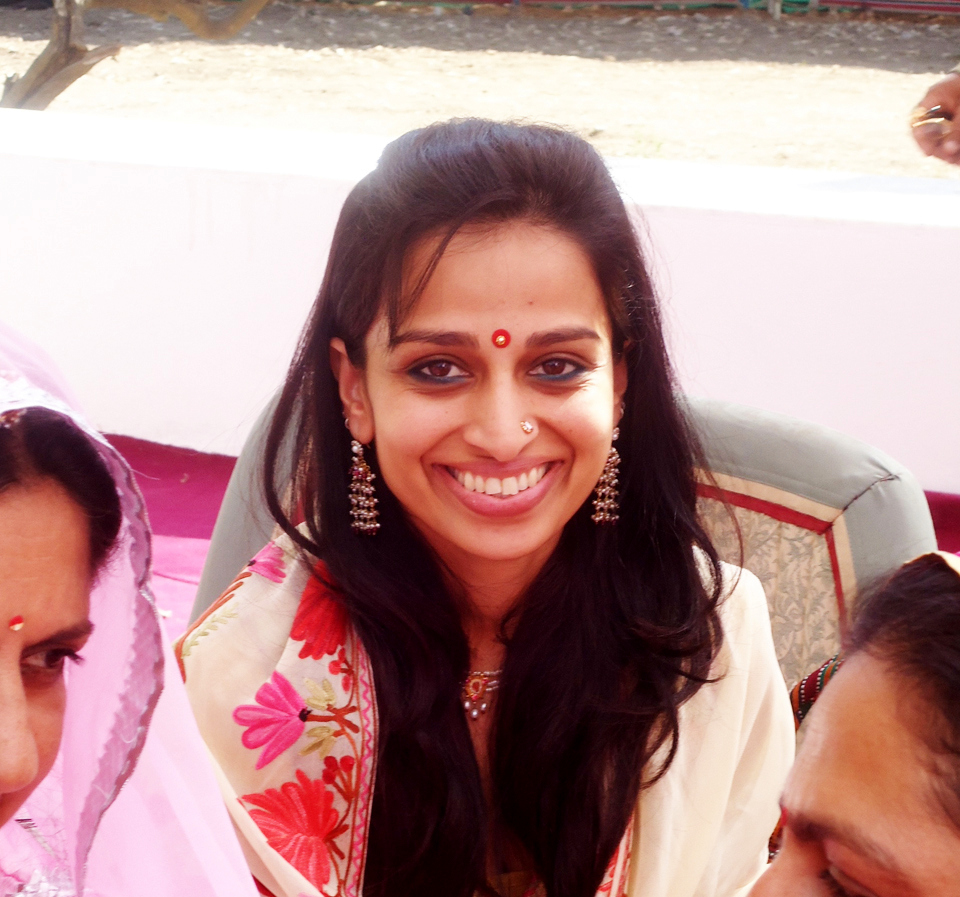This article written by Apekshita Varshney was first published in ‘White Print’ – a braille magazine for the visually impaired, founded and published by Upasana Makati.
Faraway in Rajasthan, amid sand dunes and torturous loos, women are slowly lifting their veils and embracing the easiest available skill: Stitching. At the cusp of this revolution, Radhika Rathore returned to her village and began exploring how she could connect her passion for arts and craft with the subdued profession of stitching. What emerged was Sindarfi, an assortment of embroidery, stitching and everything quirky!

The Inspiration For What Unfolded Later
By education and profession, I am a Graphic designer but I’ve always had a keen interest towards arts and crafts. Handmade crafts hold an extremely special place in my heart and Sindarfi is purely an extension of that love.
I am an avid fridge magnet collector and maker. If I have to share a secret; every time I travel, I never forget to carry my embroidery threads and a piece of felt so I can finish a few magnets or a small pouch dedicated to that journey.
I was born in a joint family and like my other cousins and I went to a boarding school. Summer holiday get-togethers with all the cousins was really the highlight for many years. Afternoons were fun filled with playing cards or carom, and then we graduated to games like Pictionary and Taboo. Evenings we would go out to the farm with our snack boxes but would enjoy the farm fresh melons more. There were times when my mother and aunts accompanied us to the farm and the visit would get a bit creative as we all had to sit with our sketch books and draw a landscape from around. Most of us ended up sketching the beautiful orange summer sunsets!
I think my mother saw her creativity grow in me. Thanks to her, by the time I was eight years old, I knew the slightly more complicated stitches like spider, lazy daisy, french knots, smocking, blanket and fly stitch. She also taught me the basics in machine stitching, patch work and pattern making. She is solely responsible for developing this interest in me and I will always be grateful for that.

The Experiences That Gave Birth To Sindarfi
After I worked for a design and packaging firm in Mumbai, my good fate got me back to Rajasthan and thanks to a dear cousin I started working for an NGO which gave me the freedom to combine both: my graphics and traditional methods of embroidery and stitching. All thanks to this job I even traveled to Masai Mara and stayed there for a month learning their traditional bead crafts. One of my big dreams to enjoy an African safari came alive then.
I worked for this NGO for three years and decided I wanted something similar in my own village and therefore, Sindarfi was born.
Sindarfi is a Rajasthani word for the shade of mixed orange and pink. I was sure I wanted to keep a name of a colour and it had to be something traditional yet feminine. Therefore, Sindarfi.
To be honest, Sindarfi is a much smaller project and we have a long way to go but I am sure we are on the right track. We house small personalised favourites like fridge magnets, handmade paper dairies, key charms, door hangings to bigger items like tea/french press coffee cozies, baby quilts in patchwork with personalised names, bags and pouches. Our website is in the making but we do have our product e-brochure and are very responsive via emails/messages and Facebook.

Connecting With The Artisans In Kharwa
My father is socially very active in my village of Kharwa and that comes as a blessing. I just had to spread the word about the project and I had inquiries flowing in. Sindarfi is also a means of getting to know the people of my own village one-on-one.
I was aware that every third house in the village owned a sewing machine. The tradition of gifting a sewing machine to daughters as a wedding gift still exists in smaller places. Women knew the basic styles of stitching but what came as a challenge was to teach them new designs like tea cozy or Christmas charms. To even explain what exactly a tea cozy is was a challenge.
Convincing the men of their house was not really an issue but to get the women to come and meet me directly for the first time was a little difficult. So I visited a few houses with my mother and convinced the women to try a hand on my designs. The work structure was simple as they had to come and collect the raw material, work from home at their own convenient time, come back to submit the finished product and receive the payment. This gave them a feeling of achievement and the Sindarfi family started growing.
One of our artisans, Sunita Ji, used to deposit a part of her earnings with me and when it was enough, she bought a mixer grinder with it. There was another lady who bought a basic mobile phone and with great pride came and told me that she had bought the phone from her Sindarfi earnings and I should be the first person to save my number in her phone.

It gives a feeling of achievement when the project is appreciated. But most importantly, now I know several people in my village and it feels great to have a means to connect with them.
Team KYS loves the form and shape Sindarfi has taken and sends more power to Radhika Rathore to keep the dying arts alive and continue empowering the women from her village.
Liked reading this? Then you might also like to read about Sanket Avlani – Telling Socially Responsible Stories Through Taxi Fabric
If there’s any story that needs to be told, we will tell it. Write to us at contact@knowyourstar.com with your story lead, or contact us on Facebook or Twitter.